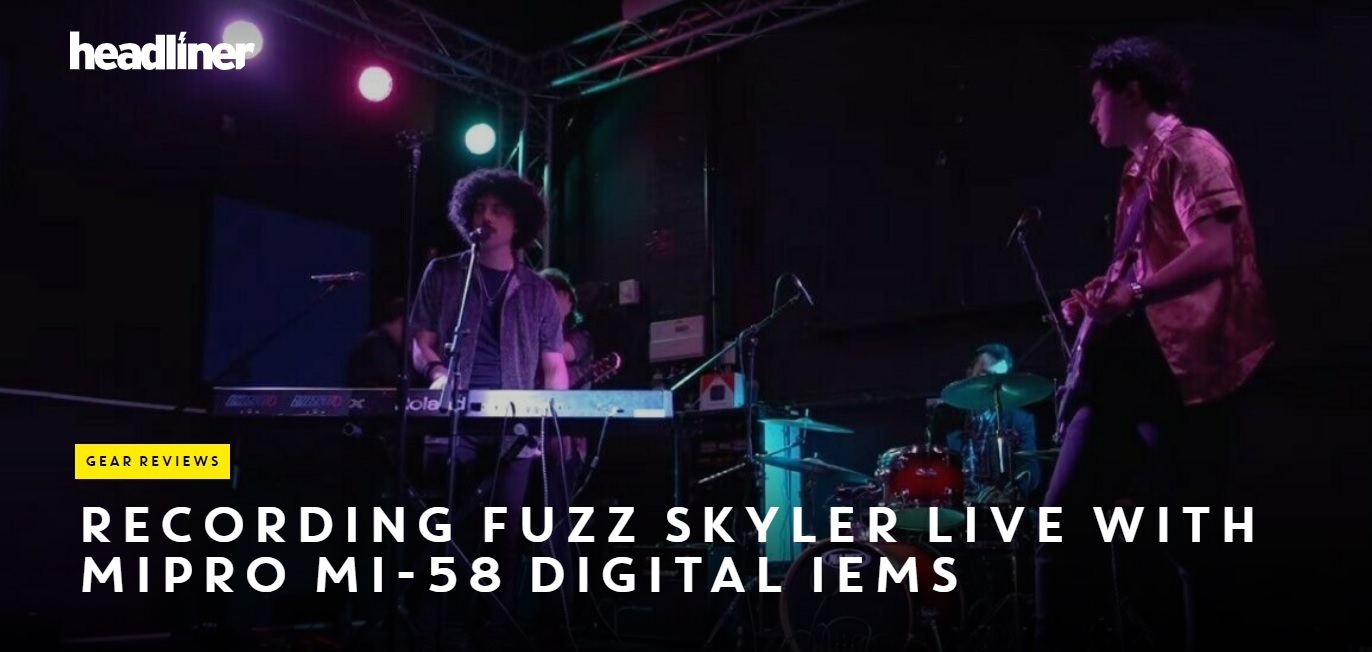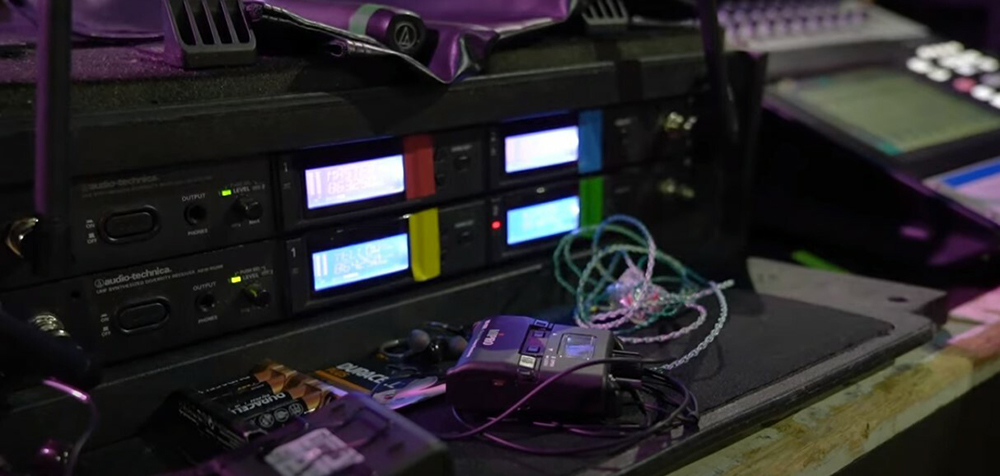Recording Fuzz Skyler Live with MIPRO MI-58 Digital IEMs

Word by Rick Dickerson

A couple of months ago I had the pleasure of helping to set up a morning of recording at Headliner’s new venue, The Pioneer Club in St Albans. I had an ulterior motive in wanting to have another play with DPA’s new 2018A Super Cardioid and 4015A Wide Cardioid Microphones, the latter of which we had a stereo pair. It also gave us another chance to put two more excellent products through their paces.
This included the excellent QSC TouchMix-30 Pro, which I reviewed last year but is still my go-to small desk for any unspecified session for three simple reasons. It’s unbelievably easy to use, it sounds really good and it’s a full 24-way I/O USB interface giving you multi-channel recording and playback capability. In other words, to keep the theme of the review going, you could call it the Holy Trinity of small consoles!
There was another product which I really loved, and which was also the subject of a Headliner review last year: MIPRO's MI-58 Series digital IEM system. This was another excellent system that was so good I refused to give it back, but I digress…

Separation
The dilemma when you’re attempting to record any live performance on stage is bleed from one instrument to another. As we know, trying to partition everything off in an attempt to reduce the spill looks odd in front of cameras and audiences, feels odd for musicians and can take a little more getting used to than a couple of hours on a stage will permit.
If you’re adding onstage monitoring into the equation, things don’t get any easier. In reality this can increase noise levels on stage so much that musicians struggle to hear anything clearly. This is one of the reasons IEMs have now become the first line of defence for on-stage monitoring. Not to mention the advantages in communicating with technical staff and engineers on separate channels via switchable talkback mics.
With all this in mind, we decided to speak to our friends at MIPRO's distributor, CUK to see if we could borrow a couple more MIPRO MI-58 systems. These they duly supplied, and the stage was set for our video session with Fuzz Skyler.

Having previously reviewed the MI-58 system, I also tried some of MIPRO's other products as part of my role as systems provider for CS Audio. The one thing that was consistent across their range was the quality of sound. For the time being though, let’s focus on the MI-58 IEM system.
While this is not yet a product that is spec’d by touring bands, the quality and performance – not to mention the attractive price point and lack of licensing issues – means it is likely to be a product adopted by bands while they’re starting out, and then spec’d once established.
To me this says they are definitely one to watch for the future. I’m aware that there are systems out there costing five or even 10 times as much that offer increased range and wider bandwidth in the UHF spectrum, but the MI-58’s performance in terms of sound quality and battery life are truly impressive, and gives any high end system a run for its money.
Latency
I remember having a conversation about latency in digital systems and it was suggested to me that a latency of over 2ms would render a digital IEM system unworkable. So to put it into context I thought I’d point out that, depending on your height and whether you’re standing over it or a metre or so behind a stage wedge, you could be anything from 6-10ms away from your source audio. I’ve never heard anyone complain about latency in stage monitors!
For what is a small stage with an acoustic drum kit, a relatively loud backline and no partition or screen separation, I think the recording speaks for itself. A very good live sound albeit without the smell of beer and the roar of the crowd!
Key to making the video review was the quick and easy setup – checking everything sounded right for the guys so we could get a take down. Having a bunch of Audio-Technica 5400 Radio Condenser Mics made recording the vocals clean and detailed, but was also a great way to show there were no signal clashes and that both 5.8GHz and UHF systems work harmoniously together.
There are a couple of really nice touches that become apparent the more you use the MIPRO MI-58 systems. Firstly, they’re incredibly light but also robust in their construction. I may have already mentioned that I dropped my review pack on more than one occasion, so it won’t come as any surprise to learn that being a little clumsy, that kind of abuse has continued on a pretty regular basis.
The good news is that so far everything is still intact nearly one year on. Another notable feature is the concealed antenna which again reduces the risk of abuse. I have had times when I’ve had to go through hire stock and solder on a new aerial. I’m not quite sure what kind of abuse it takes to sever an aerial from a pack, but it’s by no means a rare occurrence.

Lastly, I must mention that these systems come with a set of generic in-ears which you might expect to be of a fairly basic quality, particularly when you take into account the price point for these systems – you could be fooled into thinking they’re not even worth plugging in. Well you’d be wrong.
Although I’d doubt their chances of survival in the back pocket, under foot or trip test, they do sound surprisingly good and with a selection of different sized buds, are very usable. Although none of the band had moulds, a couple of the guys had bought along a pair of generic IEMs – but all ended up using the MIPRO generics and nobody had any issues with sound quality or level.
When I first looked at and reviewed the MIPRO MI-58 system I probably, because of its price point, worded and focused the review very much toward the new user. After living with it for over a year now, I have very much grown to respect this digital system in its own right, especially the Dante version which for those of you who have Dante cards installed on your desks, allows you to keep everything in the digital domain.
If you’re looking to improve the sound quality of your current IEM systems then check out MIPRO. You may even find that a very noticeable improvement costs you less than the last system you bought!
※Source: https://headlinermagazine.net/recording-fuzz-skyler-live-with-mipro-mi-58-digital-iems.html






